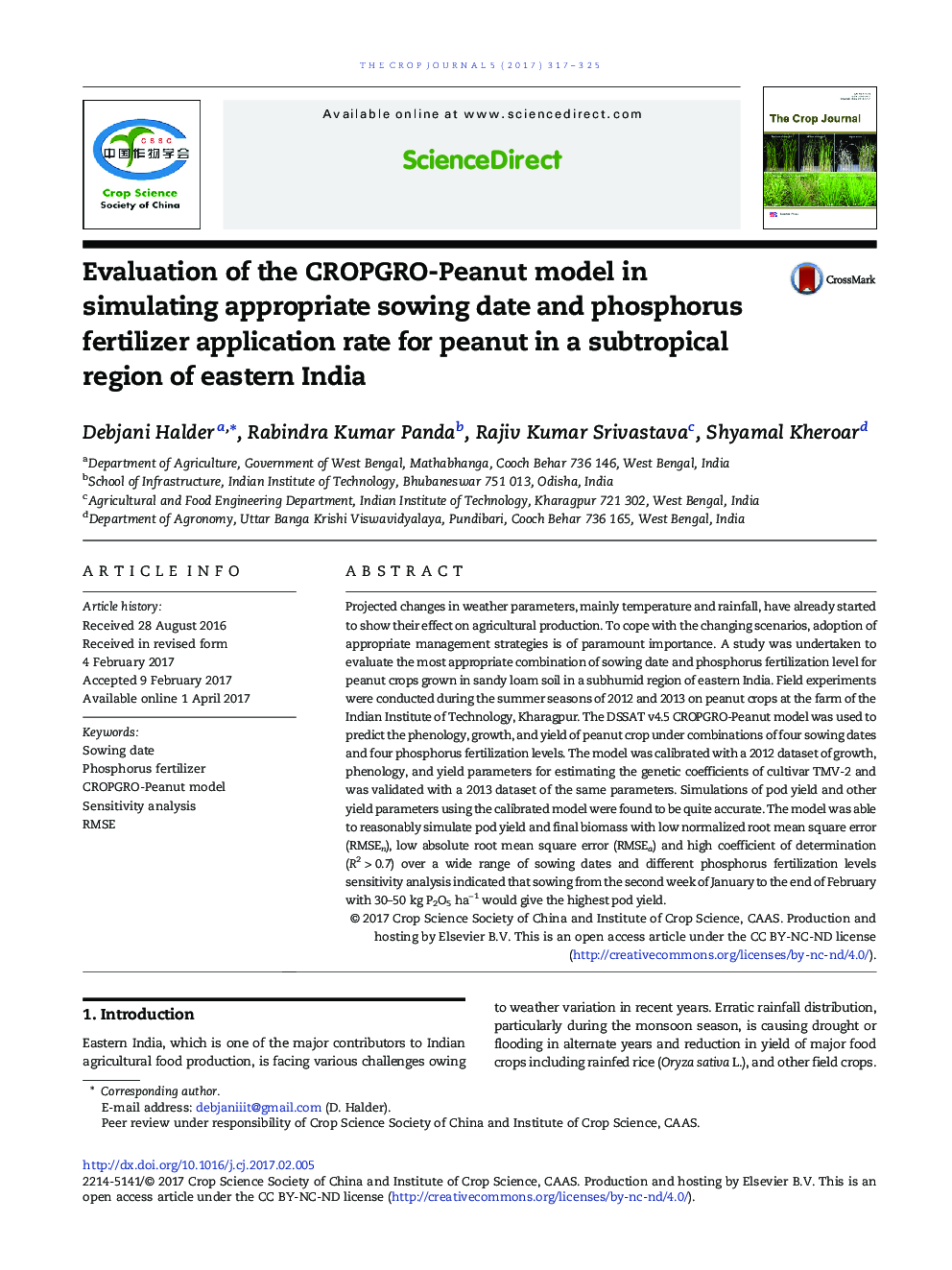| کد مقاله | کد نشریه | سال انتشار | مقاله انگلیسی | نسخه تمام متن |
|---|---|---|---|---|
| 5520833 | 1401232 | 2017 | 9 صفحه PDF | دانلود رایگان |

Projected changes in weather parameters, mainly temperature and rainfall, have already started to show their effect on agricultural production. To cope with the changing scenarios, adoption of appropriate management strategies is of paramount importance. A study was undertaken to evaluate the most appropriate combination of sowing date and phosphorus fertilization level for peanut crops grown in sandy loam soil in a subhumid region of eastern India. Field experiments were conducted during the summer seasons of 2012 and 2013 on peanut crops at the farm of the Indian Institute of Technology, Kharagpur. The DSSAT v4.5 CROPGRO-Peanut model was used to predict the phenology, growth, and yield of peanut crop under combinations of four sowing dates and four phosphorus fertilization levels. The model was calibrated with a 2012 dataset of growth, phenology, and yield parameters for estimating the genetic coefficients of cultivar TMV-2 and was validated with a 2013 dataset of the same parameters. Simulations of pod yield and other yield parameters using the calibrated model were found to be quite accurate. The model was able to reasonably simulate pod yield and final biomass with low normalized root mean square error (RMSEn), low absolute root mean square error (RMSEa) and high coefficient of determination (R2 > 0.7) over a wide range of sowing dates and different phosphorus fertilization levels sensitivity analysis indicated that sowing from the second week of January to the end of February with 30-50 kg P2O5 haâ 1 would give the highest pod yield.
Journal: The Crop Journal - Volume 5, Issue 4, August 2017, Pages 317-325